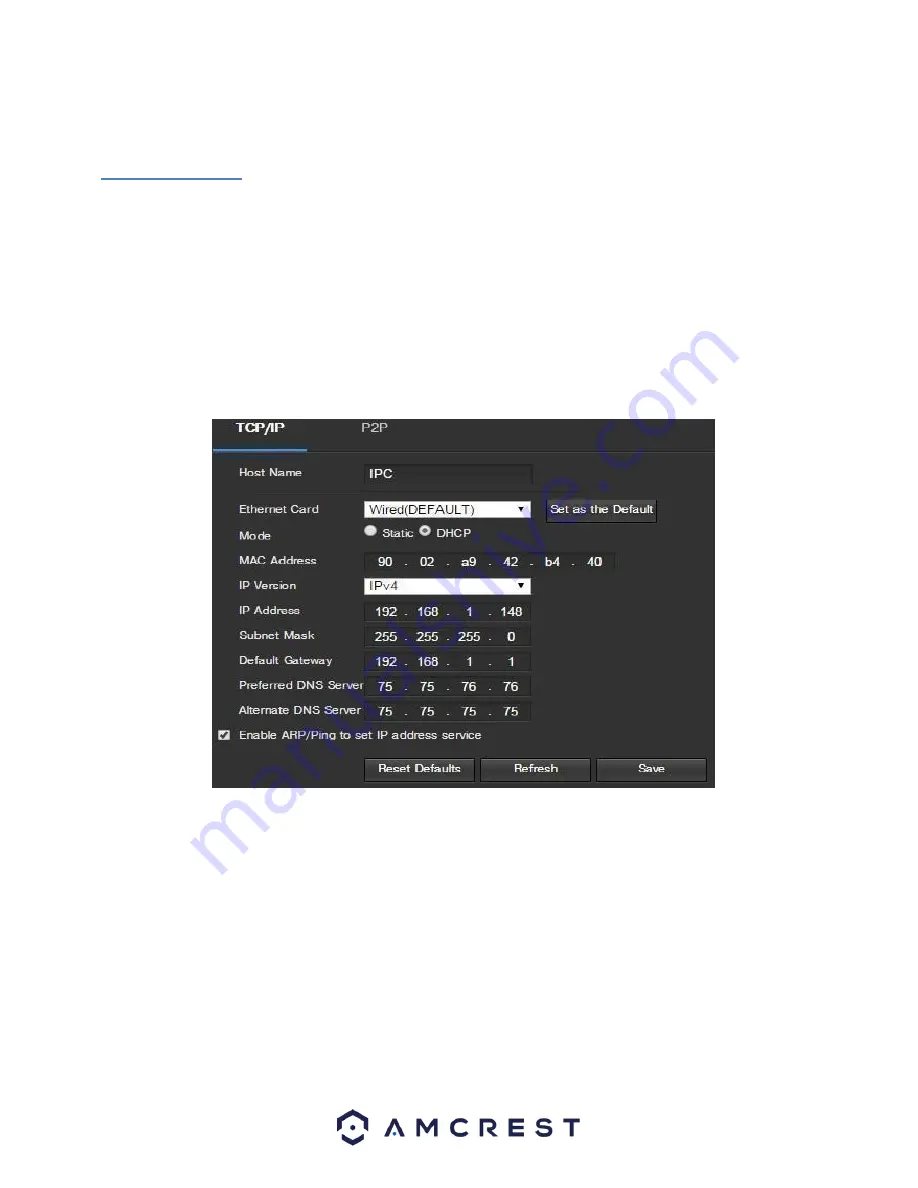
82
To reset to default settings, click the Reset Defaults button. To save the settings, click the Save button.
5.4.2 Network
This menu section allows the user to change network settings for the camera.
5.4.2.1 TCP/IP
The TCP/IP menu item has two tabs: TCP/IP and P2P.
5.4.2.1.1 TCP/IP
TCP/IP stands for Transmission Control Protocol/Internet Protocol and it is the language/protocol that allows
communication between internet connected devices, whether on a local network, or a on the Internet at large. This
screen allows for TCP/IP settings to be modified for the camera to establish a connection to the network. Below is a
screenshot of the TCP/IP settings tab:
Below is an explanation of the fields on the TCP/IP settings tab:
•
Host Name
: This text field allows the user to change the host device name for the camera. This field supports a
maximum of 15 characters.
•
Ethernet Card
: This dropdown box allows the user to select which internet access device to use. If the device is
connected to a wired connection and a wireless one at the same time, then this box will have options to pick either of
the connections. The Set as Default button allows the user to select one of the connection methods as the default one.
•
Mode
: Static vs DHCP: This radio button allows the user to choose between a static IP address, and a dynamic IP
address. DHCP stands for Dynamic Host Configuration Protocol, and this enables the camera to automatically obtain
an IP address from another network device such as a server or more commonly, a router. When the DHCP function is
enabled, the user cannot modify the IP address, Subnet Mask, or Default Gateway, as these values are obtained from
the DHCP function. To view the current IP address, DHCP needs to be disabled. Note: When PPPoE is enabled,
modification of the IP Address, Subnet Mask, and Gateway becomes prohibited.






























